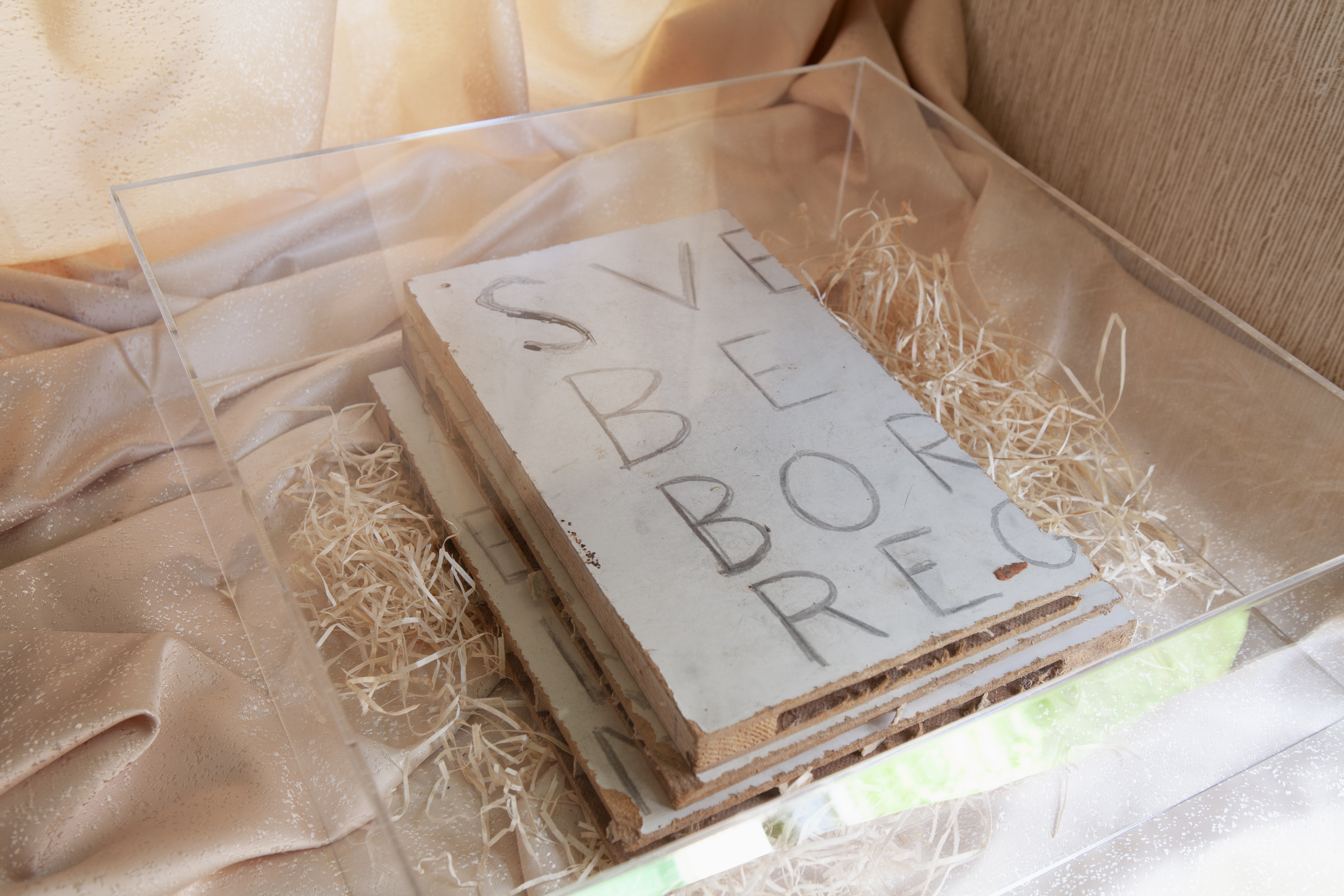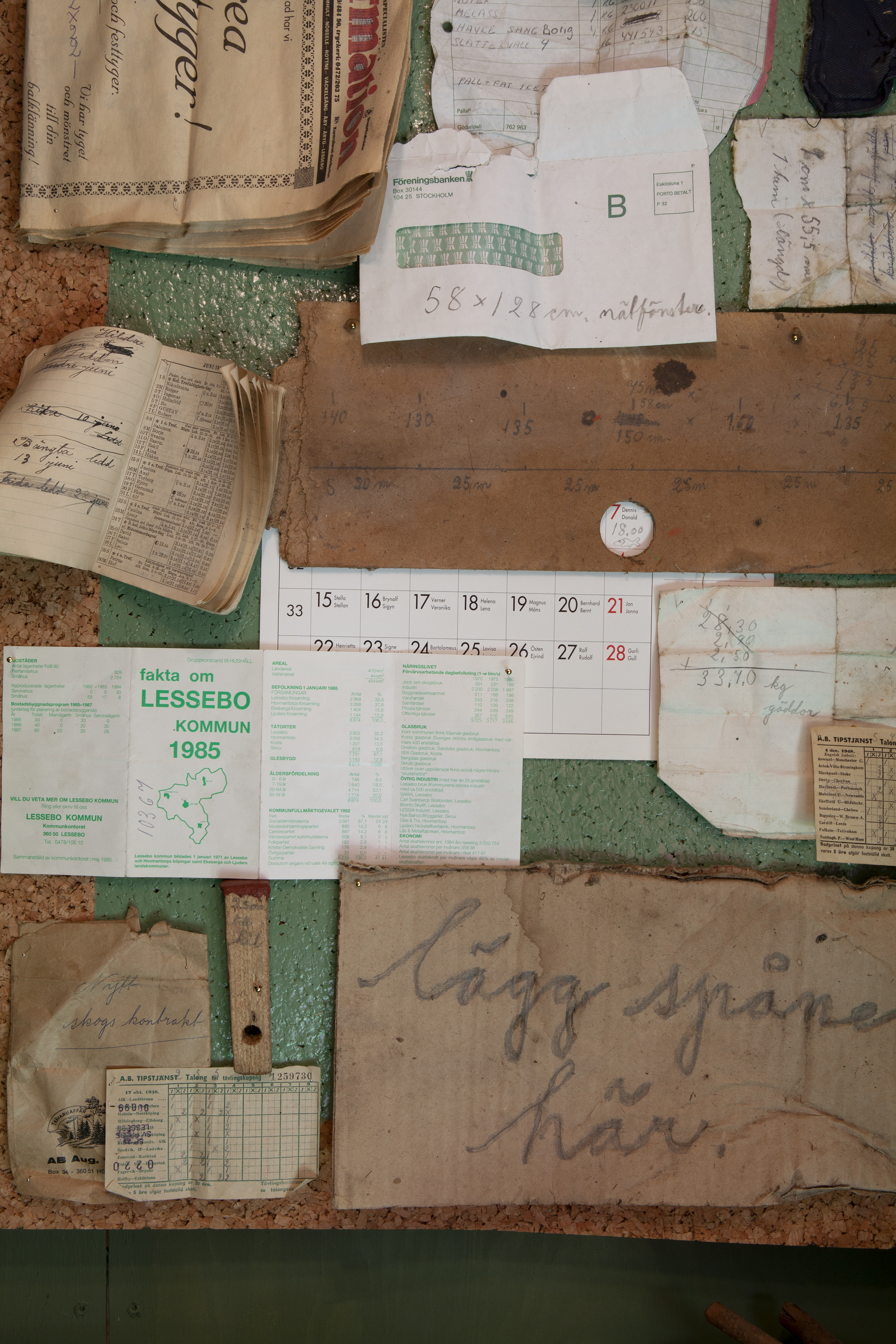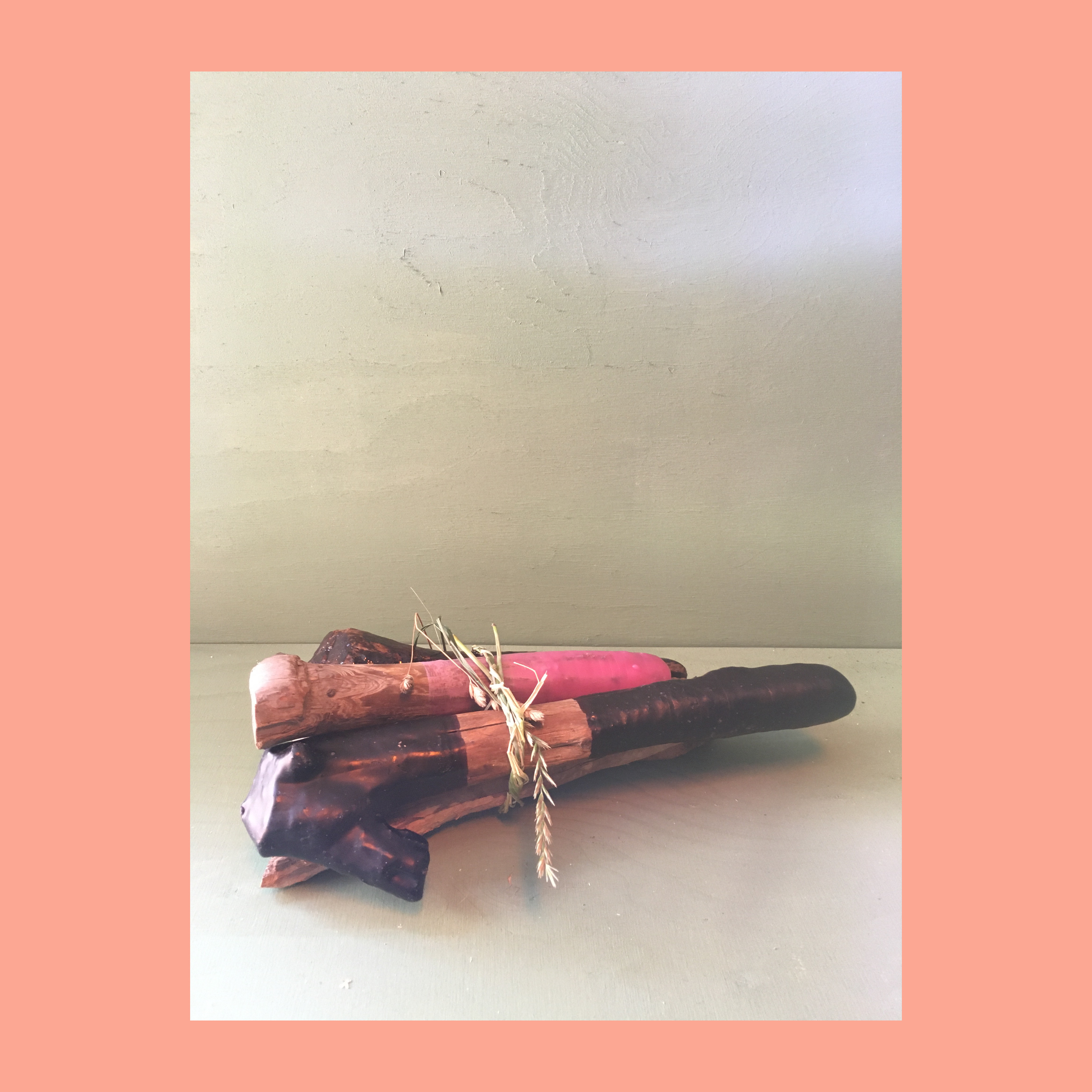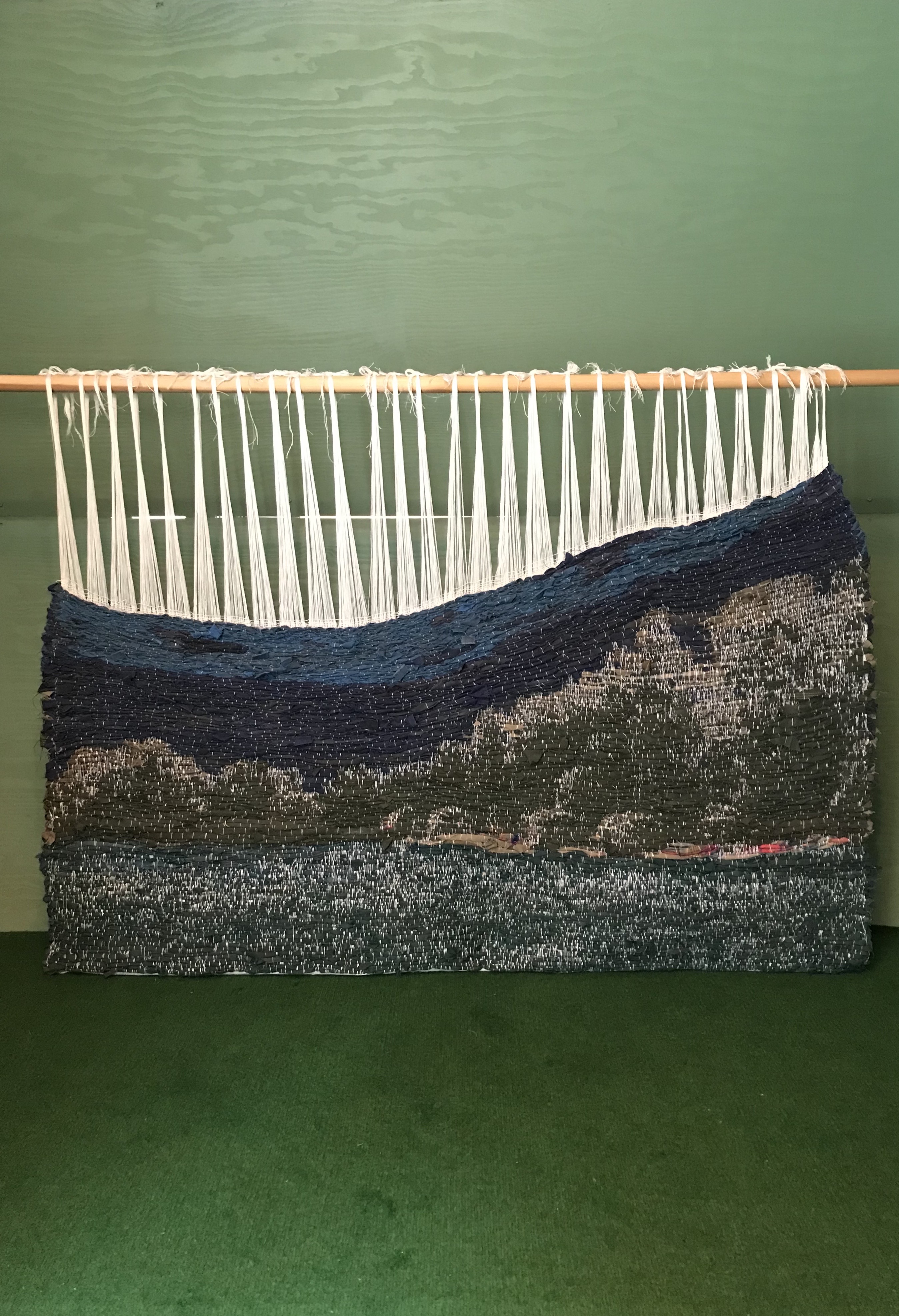Djuren behöver,
Sverige behöver –
Kulturvagnen Gift Shop Remix
Material:
Coffee mugs, found sign, frottage of molasses instructions, home made farmer's biscuits made from molasses, wood wool, acrylic plastic box, acrylic plastic display stand, pink marble top, gold fabric.


As we searched through the barn, we found two signs that almost shouted their message to us there in all the mess. The first sign we found read "Animals need molasses!". The second one was sawn into three pieces and the text on the first piece read "Sve...be...bor...reg...", we immediately got curious about what someone had written on the wooden sign and looked further. After a few hours we found the end of the sign and it said "e...er...lig...ng!" the word play was now starting to fall into place but we couldn't be sure until we found the middle piece. After a few more hours of searching we found it, the puzzle was complete; “Sverige behöver en borgerlig regering” - "Sweden needs a bourgeois government". An incredibly fascinating link between past and present was the coincidence that we found the sign on the exact day that the no-confidence vote against Stefan Löfvén took place in the Swedish government and the Social Democratic bloc fell. Could the sign's message perhaps point back to a history of agricultural policy advocated by the Social Democrats over the years?
We were interested in how these two sentences in capital letters talked to us in a loud voice, using a language reminiscent of both advertising and propaganda. We decided to take the language and try it out in a radically different context from the one in which we found the material. We wanted to play with the shape of the commercial souvenir shops that we have often visited in art museums around the world, and so we created Kulturvagnen Gift Shop.
Kulturvagnens arkiv – Miscellaneous Objects and Notes in No Specific Order
Material:
Collected items of varying material and size, collected notes on various paper materials, mended breast pocket



During an inspiring visit to Ljuder's local museum, we looked at tools and equipment that were part of the historical farming and forestry community. Many of the items we saw in Ljuder we also found in the barn we searched; such as flail hoes, pitchforks, wooden bow saws, raven hoes, rakes, etc. But the items we found that came to interest us more were those wonky home-made devises that usually don't fit in a traditional museum. Here we have chosen to create our own mini-archive for these objects, which were probably also central to the daily work on the farm. Along with these, we also wanted to show those random notes, filled in lottery tickets and everyday calculations one made on the fly in the middle of the day's work.
Hello, Hej, New Neighbours –
Objekt Nr 6:19-001
Material:
Video, wooden object of dimensions 205x125x20 mm, archive binder, plastic foam

(Still from video)
One aspect of archaeological work that we were interested in is the classification of unidentified objects. Is it possible to identify objects from a bygone era without being influenced by contemporary norms and current issues? To what extent do contemporary phenomena influence how we choose to view our history? Often in archaeology, as neutral an approach as possible is advocated. We wanted to play with these questions and did the opposite. A wooden object that we could not identify particularly interested us and we decided to interpret this object influenced by pressing issues today.
Hips Don’t “Lie”,
Yes They Do –
En liekoreografi
Material:
Video 8 min 21 sek.


(Stills from video)
During the excavation, we found many interesting farming tools, including a large number of broken scythes, which clearly show that a scythe was one of the most common tools used in historic Swedish agriculture. Being able to handle a scythe was an obvious skill in the older agricultural society, but something that is not so obvious and well known today. None of us have any knowledge of mowing or how to use a scythe. We became interested in how these movements feel in the body - something we have heard should be like a dance, and on that note we continued. We decided to create a choreography based on both American and Swedish scythe tutorials found on the internet. In the video work we try to embody both the movements of the scythe and its use. The working clothes we found in the barn were examined in parallel, including a mapping of how they had been worn over the years. For example, they were often patched in the crotch and almost all trousers and overalls were worn out just above the right pocket, which was probably due to the fact that the right hand often rested in the pocket. How we imagined these clothes had been worn also influenced how we choreographed the movement.
Pleasure Sticks –
En serie medvetna feltolkningar
Material:
5 wooden sticks with rounded tops, boat varnish, pink wax, black wax, glass dome, braided garlic leaf

A couple of years ago we came across a text describing how a series of phallic-like objects had been found in the 19th century. Archaeologists had identified and classified the objects as various kitchen utensils. Much later it became clear that the objects found were in fact "sex toys" but because of the ornate and more reserved nature of time in which the finds were made, archaeologists chose to deliberately misinterpret the objects. It was simply less controversial to relate to objects belonging in the kitchen than to sex toys. This phenomenon points to the difficulty of not letting the interpretation of unidentifiable objects be influenced by the times in which one finds them and the prevailing norms of that era. Working in the barn, we in turn found five phallus-like wooden objects, and with the previously described incident fresh in our minds, we wanted to do the opposite and interpret the objects in line with our sexualising present.
Nio snören hittade i nio bakfickor –
No Strings Attached
Material:
Back pockets of various work clothes, string stubs, wrapping paper from a bun

We were standing at the back of the barn, sorting out and cleaning all the old working clothes we found, when suddenly bits of string started falling out of the back pockets of the trousers and overalls. After a while, we had gathered the strings from all the clothes we found. They were so delicate in their shape. All the years sitting in those pockets had so noticeably pressed and twisted the cords together into small unique sculptural objects. We wanted to show these delicate objects just as we found them.
Arbetarens fält –
Colours of Wear
Material:
Fabric from used working clothes, mercerized cotton warp, wooden round bar



Amidst all the rubble in the barn we found lot of old worn out working clothes; overalls, trousers and shirts. We collected, cleaned and arranged them in piles at the back of the building. As they lay there in the grass, it was so obvious that the colours and nuances of these clothes were represented in the view of the field, the woods and the sky behind the building where we found them. We wanted to connect the clothes and their worn shades with the place and nature in which they had “worked” and decided to weave an image of the view in the form of a textile 'backdrop' using only the old clothes as material.
Desire, Desire,
Pants on Fire –
“Småland - Kansas och tillbaks igen”
Material:
Spread from Stopp Aktuellt (1989), ad page from Smålandsposten (1946), imitation wood in vinyl, plastic bag from Oui Original Basic Jeans

A lot of the process with these works has been about seeing connections and making associations between the different objects we found and showing the correlations we made between them. Interesting examples are parts of a newspaper and a magazine that we found. One is an advertisement page from the local newspaper Smålandsposten from 1946 where the majority of the ads are looking for female domestic labour, the other is a copy of Stopp Aktuellt from the late 1980s. Both communicate a desire for the female body, but in different ways. The fact that an erotic magazine found in a barn in Småland has a spread about a farmer in Kansas is an intriguing coincidence, given the area's historical ties to America. The plastic bag in turn becomes a symbol of American culture and further underlines the regions historic link to USA. The material in both the newspaper and the articale in the erotic magazine create a web of desire and suggest how it might be motivated by shifting positions of power from different perspectives.